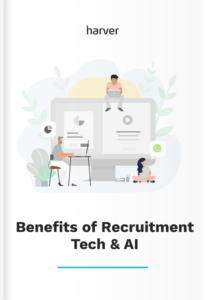“We’d like to automate the manual tasks as much as possible, but we don’t want to lose the human component. We take pride in how we communicate to candidates, so we want them to have a pleasant experience, but our store managers are overwhelmed.”
It’s what we hear from most of our retail clients looking to remove the bottlenecks from their recruitment process and to empower their store managers to work more efficiently and recruit better candidates.
While a lot of them have an idea of what recruitment automation is and what it entails, retail recruiters who handle large volumes of applicants are afraid of losing the overview of the full hiring process once automation takes over.
So when they approach us to see if our retail volume hiring software is the right fit for their particular use case, they have these specific requirements:
- They’d like to automate repetitive tasks such as resume screening, assessing candidates or scheduling interviews.
- They’d like a hiring tool that helps them assess candidates in a non-biased, scientific way, based on their skill set and attitude instead of their CV or past experience.
- They’d like a recruitment software that integrates with their current tech stack, to make the process smoother for the store managers.
Is it possible for a tool to address all these challenges and automate only those parts of the retail recruitment process that are time-consuming and inefficient, while allowing store managers to be in control?
The short answer is: Yes, absolutely! But we’d like to show it instead of just telling it.
We’ll guide you through:
- How we handle retail recruiting automation,
- What the process looks like for our clients,
- How our tool changes the day-to-day life of store managers, and
- The results you can expect after using our retail high volume hiring software
Let’s dive right into it!
What’s in?
What retail recruitment automation is and isn’t
Recruitment automation is the use of technology to streamline tasks and workflows within the hiring process that would otherwise be done manually.
It can cover the full recruitment funnel, from sourcing and application to onboarding candidates and monitoring the performance of new hires. And it can even give you real-time insights into the performance of your retail employees through business intelligence tools.
This is possible by incorporating technologies such as machine learning, AI and data analytics into the hiring process in a way that serves the company while delivering a smooth experience to candidates.
We’ve covered the topic thoroughly in our e-book on the benefits of AI and recruitment technology, which you can download below.
How AI & recruitment technology is changing recruiting experience
Find out how tech has helped other companies grow by enhancing both the recruiters’ and candidates’ experience!
Now, if you ask a retail CEO or Head of Recruitment if they’d like their store managers to have more time to serve customers and to put less effort into manual, mundane tasks, the answer will invariably be “Yes”.
But if you ask your store managers if they’d like to use yet another tool for recruiting candidates, a tool that’s mostly automated and doesn’t really need their input during the day, you might notice some resistance.
Although retail recruiting automation is a stepping stone in the digital transformation of an organization, talking about it is much easier than doing it.
Automating your volume recruitment process requires a shift in strategy and changes in the way your store managers handle their daily tasks. Hesitations and doubts are therefore normal, and we find that the best way to reduce reluctance is to educate your employees on what automation in high volume hiring entails.
What stages of the recruitment funnel are automated?
While the depth of automation varies from one client to another, high volume retail recruiters can automate virtually any step in the hiring process, from “Apply” to “Hire”.
Here’s how this looks in practice.

In the scenario above, the candidate visits any job portal or career site and applies through a regular application form. From there, he or she is taken to either a client ATS or to the Harver platform, where automation kicks in.
Through a series of scientifically-validated assessments that are chosen based on the job and company profile, the candidate is evaluated and scored and only the best matches are moved to the next stage.
We’ve detailed our two-way matching framework in a previous article – give it a read if you’d like to learn more about the practical details of our auto-matching recruitment technology.
Going back to the application flow and the impact of automation on retail recruiting, here’s what happens during the different stages of the process.
When the candidate enters the auto-matching flow, they’re presented with a company video that helps them understand the culture and the environment they will work in. Then, they go through a series of SJTs – situational judgement tests – that asses their skills and how good of a match they are for the role.

If they fit the profile you’re searching for, they’re moved to the auto-scheduling phase, where they can select a time slot that fits their schedule. The best part though is that in the backend, your store manager has already selected some days and hours when he or she is available for interviews.
So what this means for your employees is that instead of having to check the ATS and refresh their email inbox and calendar several times a day, all they need to do is go into the Harver platform, set their availability for interviews, and wait for interviews to be scheduled.
Recruitment automation software options for high volume retailers
We’ve seen the process, but let’s look also at the different options retailers have when it comes to automating their recruitment funnel.
From specific pre-employment assessments for retail, to rerouting software for multi-location stores, there is a wealth of technology available that will make the lives of store managers much easier.
Matching technology
Store managers aren’t recruiters at the end of the day, even though it’s one aspect of their job. They may have a large stack of resumes for entry level employees that all look similar, so they need data to make hiring decisions that are in their language and easy to action.
Matching technology for recruitment allows them to find the right quality people for their store, quickly and cheaply. By using relevant data to match the right candidates with open roles, based on the candidate’s skills and the requirements of the position, can reduce bottlenecks caused by an influx of under qualified, or the wrong applicants.

Automated stage progression
Using matching technology, you can set certain thresholds to allow applicants to move through the recruitment funnel without the need for manual review, freeing up store managers from having to carry out needless, manual, tasks.
When a strong candidate comes in, giving them the opportunity to self-schedule an interview or notifying your store manager they have a top candidate available, makes the experience more pleasant on both sides.
This is an easy win for both store managers and boosts candidate engagement, especially when high volume hiring.
Candidate self-scheduling
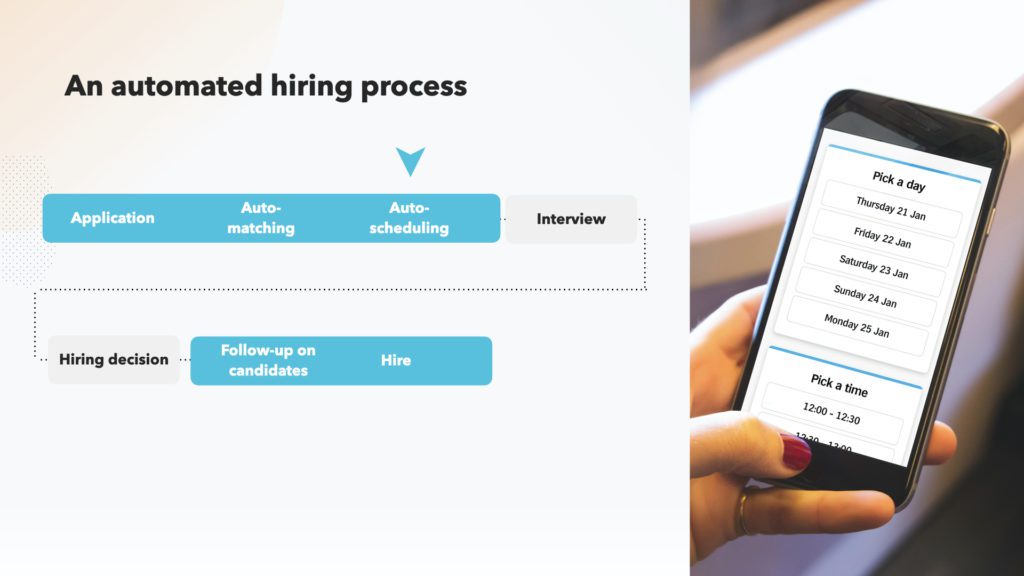
Candidates should have the ability to self-schedule a virtual or in person interview if your assessment proves they’re a strong match. Even if you’re conducting retail volume hiring, candidate self-scheduling takes away the back and forth of scheduling, allowing candidates to select the best slot that’s convenient for them.
This allows your store managers to have time with the candidate to finalize hiring decisions, without needing to screen dozens of resumes and make phone calls to schedule check ins. Automating laborious tasks with time to hire software significantly reduces recruitment bottlenecks.
Realistic job previews
One of the most frustrating (and costly) issues of recruitment is when you get to the very end of the process and the candidate withdraws their application, declines the offer or quits soon after joining.
Providing candidates with a realistic job preview or job simulation during the application process allows you to maintain control over your employer brand (across locations), and helps candidates opt-out early on, if the role is not for them.
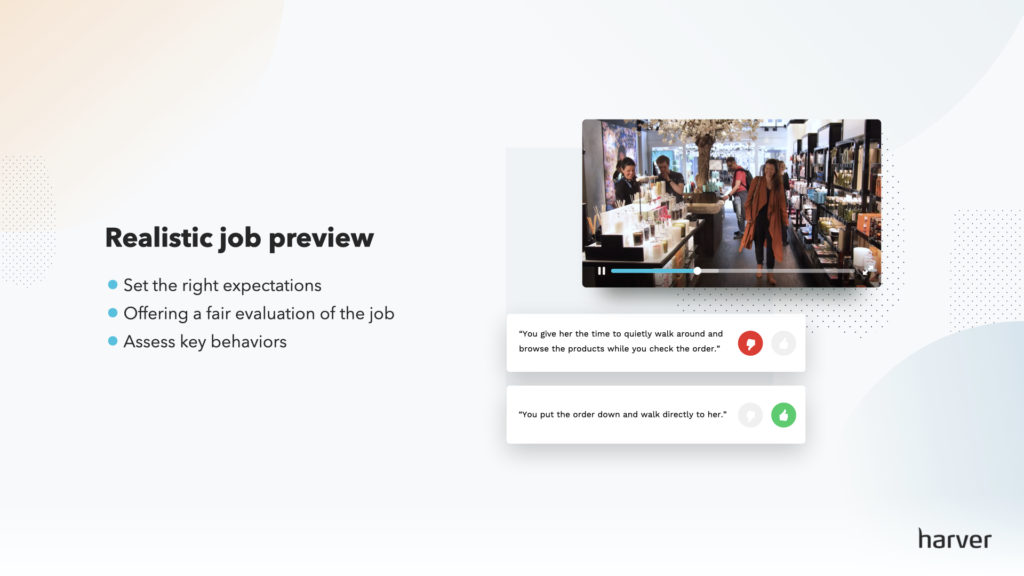
A retail recruitment platform can give each candidate a look into what they’re applying for before they progress with the application, delivering only dedicated candidates to the store manager for final decision.
Multi-location routing
One of your stores may have tons of extra applicants, leading to a store manager with a huge stack of resumes on their desk. Another might not have enough, leading to poor hiring quality.
No matter which you see more commonly, allowing candidates to apply to multiple locations through retail recruitment software, and direct their application to the store with the most need, takes pressure off store managers who have too many applicants and gives options to those with not enough staff.
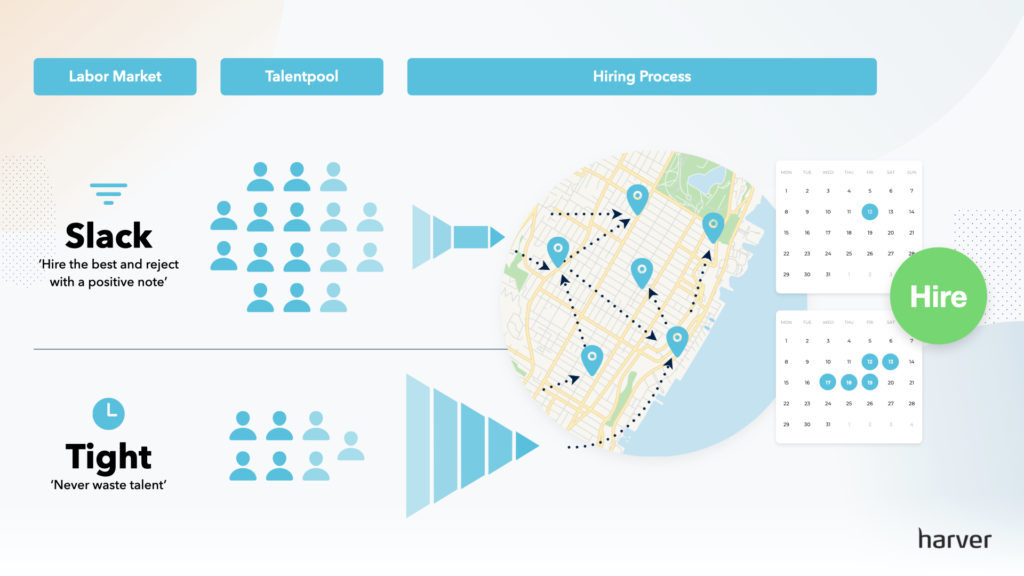
Remote on-boarding
Onboarding can be a tough nut to crack at the best of times. Onboarding during a pandemic? That’s really cranked the difficulty up.
Remove bottlenecks by setting up a standardized, high quality onboarding to smooth the transition from applicant to employee, and set a positive tone for their time working with you.
To guarantee effective remote onboarding, make the process an extension of your already engaging recruitment process. New recruits will likely have been through a virtual recruiting process to get to this point, so they might feel even more detached than usual.
Introduce them to their team early on and make sure they’re aware of who they report to, and that they know where to turn to if they have any questions.
Additionally, scanning IDs, collecting documents, and answering common questions will take your store manager’s time away from their day-to-day responsibilities.
The final say
When you’re stuck between which candidates to hire, or you’re flipping between several potential candidates, remove the bottleneck by giving the final decision to the person who’s actually going to be working with the new hires: the store manager.
Whether you employ a team of centralized recruiters or matching technology that helps screen applicants down to make volume hiring easier, giving your store managers the final say on approval of candidates (backed with data to drive the decision), gives them autonomy and reduces the risk of alienating them in the process.
What hiring bottlenecks does automation solve for retailers?
The perfect storm of challenges from 2020 did not disappear in 2021. But now the storm has cleared a little, with vaccines on the horizon, retailers have reached a fork in the road — take the opportunity to transform recruitment processes, or cling to old processes and fall behind.
For many retailers, traditional recruitment processes are fraught with their own challenges. Their hiring process is manual, repetitive, time consuming and biased.
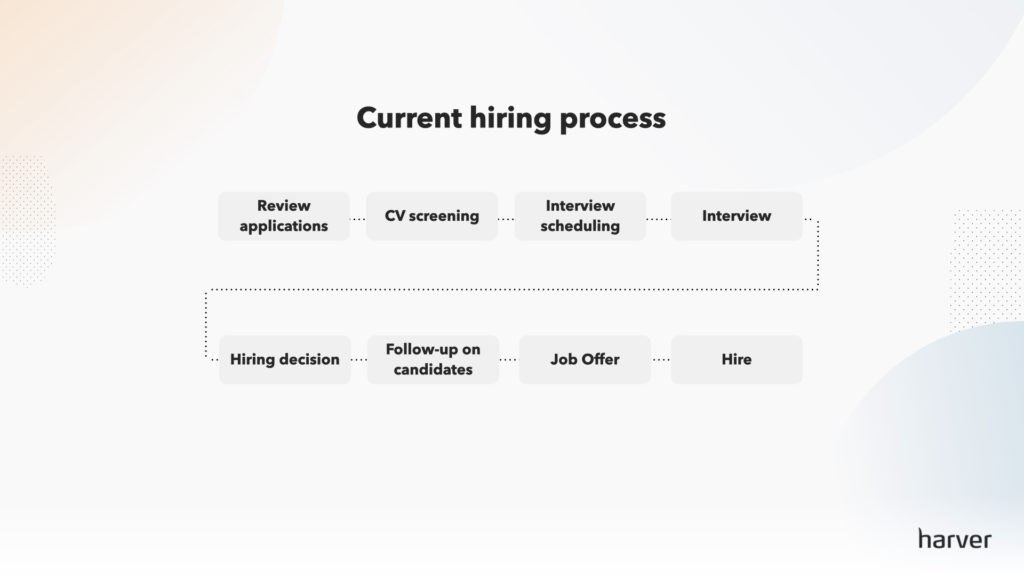
Candidates selected based on past experience and resume end up leaving the job prematurely because their expectations weren’t met. This leads to high employee attrition rates, one of the biggest challenges retail recruiters are dealing with.
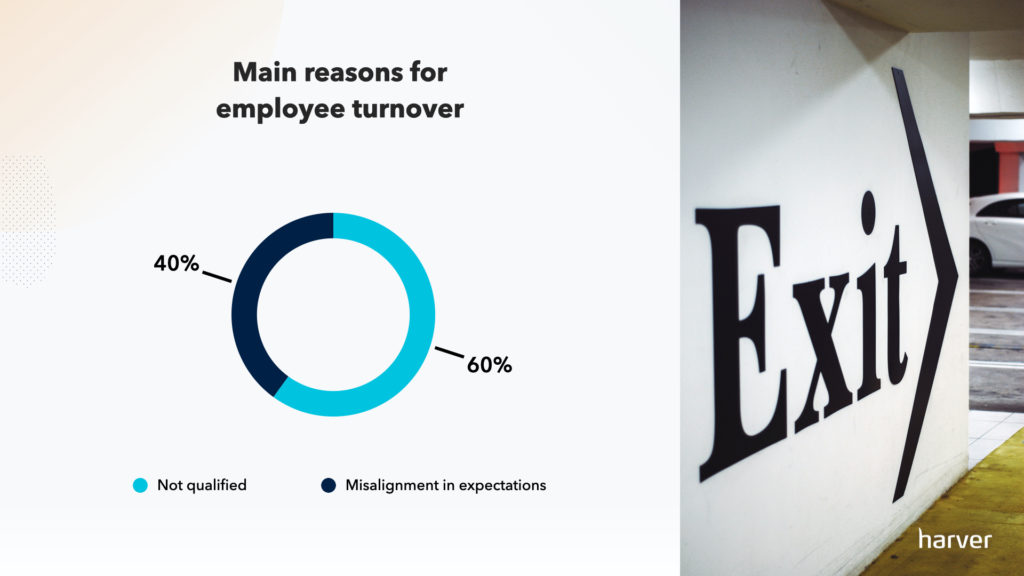
Now, with the increasing Covid-driven unemployment rates, candidate volumes in retail are going through the roof, and high volume recruitment looks very different from what it was just one year ago.
What makes this more complicated is that recruitment isn’t the sole job of store managers – store managers still have stores to run. Plus, candidates are looking to secure a job quickly, meaning any delays in the recruitment process could result in losing applicants to competitors.
Essentially, retail recruitment in 2021 needs to be automated: store managers need to hire fast without being burdened. But how exactly does automation help to remove bottlenecks in the retail recruitment process?
Lengthy application
If the job application process is outdated, or the application process is lengthy, it can create bottlenecks at the start of the recruitment process.
71% of applicants said they would abandon applications that took more than 15 minutes, part way through, if they feel they’re taking too long. 1 in 10 applicants will abandon it if it takes longer than 5 minutes.
It isn’t just length in the application process that can cause bottlenecks: taking too long to process applications, to decide who the best people are to invite to interview, or to give job offers too, are all obvious bottlenecks that will see applicants look elsewhere.
Hiring based on resumes
Hiring managers (most typically the store managers) have to pause their day-to-day job of managing the store to review resumes.
In a busy store, this could lead to a resume stack piling up and becoming overwhelming, leading to shortcuts in recruiting, poor candidate selection and potentially bias during hiring.
And speaking of selection, if you’re curious how it can be done efficiently and without human bias, check our e-book below.
Stop guessing,
Start data-driven hiring.
Learn how you implement a modern candidate selection process, that is: streamlined, experience-driven and backed by data.

Manual screening tasks
On top of resumes to sift through, there are also phone and in-person interviews to conduct, all of which can be incredibly draining for a team of recruiters or hiring managers.
But, and this is vital to ensure you maintain the relationship with your store manager – you need to bring your store managers in to be a part of the recruitment and on-boarding process with the candidates coming into their store, or you risk alienating them by not having them involved.
Scheduling interviews at scale
In every recruitment process there is a lot of back and forth between candidates and talent managers and hiring managers, to arrange interviews and next steps.
Meaning not only do you run the risk of losing talent due to the delays, but when retail recruitment is the sole responsibility of the store manager, they also have to spend a lot of time away from the store floor, to both coordinate and conduct interviews.
Too many people involved
If the candidate moves from a phone-screen with a recruiter to a second interview with the store manager, they may feel like they keep starting the process over with each new person they meet, and this can feel unsettling for a lot of people.
With so many people potentially involved in the recruiting process, it can be difficult to maintain a balance of delivering a positive candidate experience while also not overwhelming store managers with recruitment tasks.
Candidates turning down the job
You may have a lot of candidates at the start of the process, but see drop-out after the interview or onboarding process. This means that candidates think they’re interested in your opportunities, but the job isn’t being sold well enough before and during the recruitment process.
- White paper
Before you continue!
Don’t forget to grab your free copy of our new white paper on the digital transformation of retail volume hiring. Learn about:
- The challenges currently shaping the retail volume hiring space
- How to align your recruitment strategy with today’s reality by adopting technology
- The four building blocks of a fully digital recruitment process
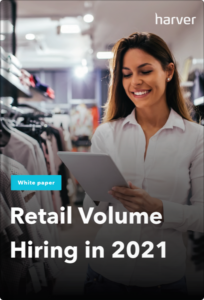
How do automated recruitment tools affect candidates?
Automating your recruitment process by choosing an end-to-end digital hiring solution designed for high volume recruiting means not only less work for store managers, but also a better candidate experience.
Instead of navigating through multiple platforms, each with its own look and feel, and of filling in the same information over and over again, applicants stay in a single platform.
If they prove to be a good fit, they can immediately schedule their own interview – and this can be done on any device: desktop, tablet or mobile!
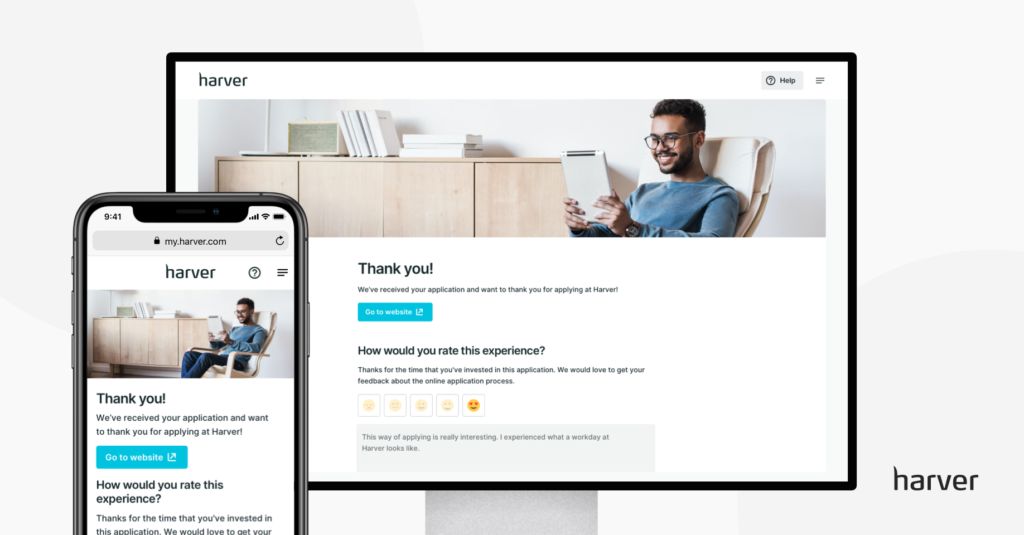
Moreover, applicants can go through the entire application flow in 8-12 minutes, and experience your company culture, see their potential colleagues and what their day-to-day role would look like.
Then, they’re prompted to solve the assessments that you’ve selected for the role, such as language assessments, situational judgement tests or personality assessments. This happens in the same session and platform, so the candidates don’t leave the flow and can completely immerse them into the application procedure.
At the end of the process, even if they’re not a good match, they still had a nice experience, so their perception of your brand isn’t affected by a poor application flow.
All-in-all, it’s a seamless, enjoyable process that doesn’t even feel like a job application experience!
Like what you see?
Don’t miss out. Subscribe to our monthly digest to get the latest TA and TM resources delivered right to your inbox.
Where do you start automating retail recruitment?
Going from multiple recruitment tools to an all-in-one software is a big decision and a complex process.
We know it can feel overwhelming, but when you look at the benefits it can bring your organization in the long run, we strongly believe it’s the only way to go if you want to step up your game in high-volume retail recruitment!
Here’s an example from Albert Heijn, one of our retail clients.
Retail recruitment automation helps to remove bottlenecks without alienating managers. Store managers aren’t recruiters at the end of the day, despite it being one key part of the job.
So if you’re looking to make your retail recruitment processes smoother and friendlier for your store managers, look for one tool that does everything, rather than buying one tool for each step. It’s far less messy and much easier to navigate.
Make your store managers’ lives easier, especially when carrying out retail volume hiring and let data guide their decision. Employ scientifically validated pre-employment assessments to give your store managers the best tools to carry out effective recruitment.

